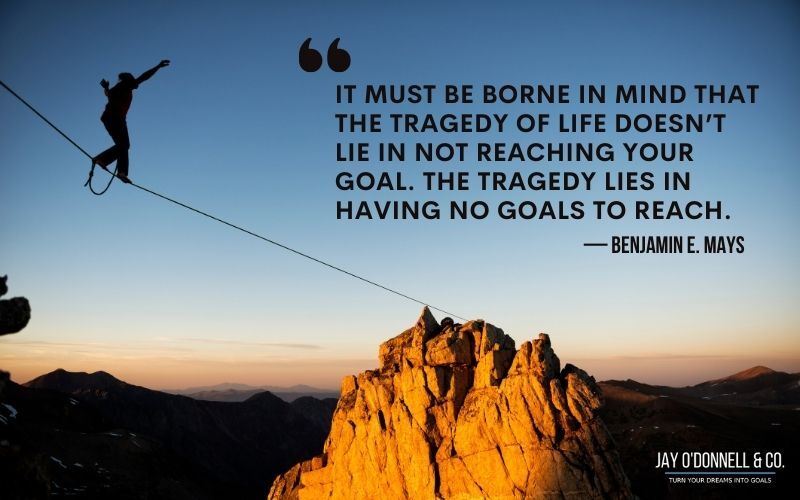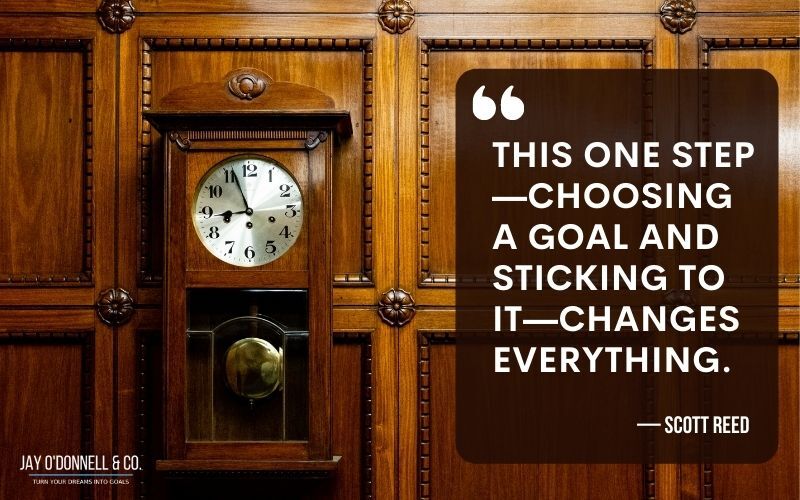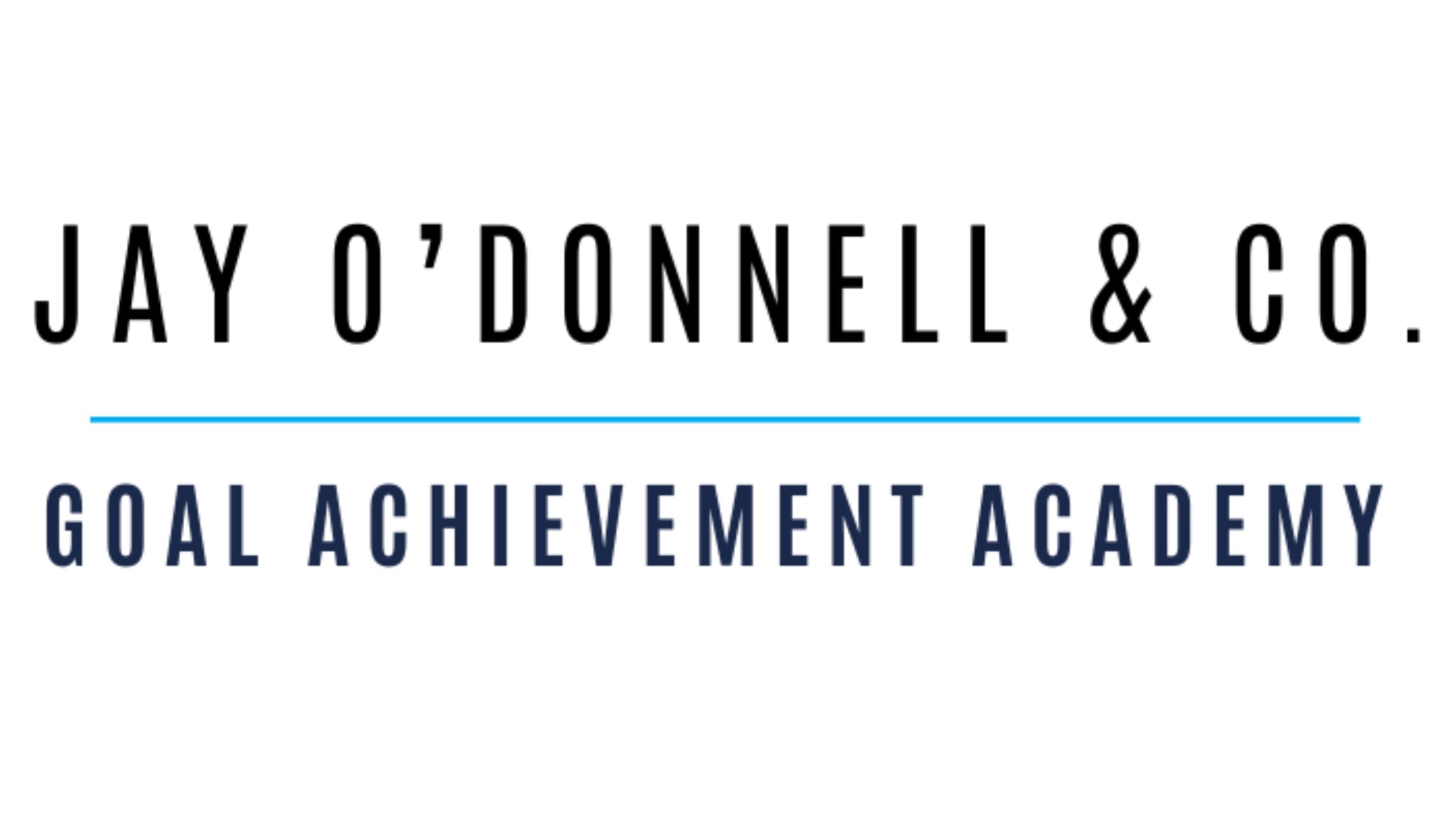When we want to find success in our lives, there are a million goals we may want to pursue.
But when our desires aren’t grounded in concretely established objectives, perfectly reasonable goals can quickly devolve into lofty and unrealistic hopes and dreams.
To help yourself achieve your dreams, you can use “SMART goals” to keep your dreams grounded in specific, attainable reality.
What Are SMART Goals?
SMART goals are goals that are:
- S– Specific
- M– Measurable
- A– Achievable
- R– Relevant, and
- T– Time-bound
This acronym is meant to help you write down your goal, turning a simple wish for success in your mind into a fully fleshed-out plan.
By framing your goals with these five elements in mind, you will no longer have unattainable and vague wishes, but concrete and manageable objectives to work toward.
I believe that Dave Ramsey said it very well:
“First, keep in mind that goals are dreams. But don’t stop at just dreaming. Turn your dreams into bite-sized pieces that will gradually create a big event in your life. If you’re waiting on an outside variable to change your life, you have a long wait. You have to do something. It’s your responsibility to fix your life, not someone else’s. It’s time to sit down, make some goals, and take control.”
If you are feeling lost or overwhelmed, or you don’t know where to begin, a simple way to start is to write down your goal. Then, you can slowly modify your goal with the SMART parameters in mind to accurately reflect what you are aiming to accomplish.
Let’s talk about how to do it.
How To Write Smart Goals In 5 Simple Steps
1. S – Be Specific

The first step in achieving a goal is making sure your goal is specific.
Consider what needs to happen to achieve your goal and who is involved with making your vision a reality.
Let’s consider a vague, non-specific goal to use as an example.
You may think to yourself:
“I want to make the world a better place.”
This is an admirable goal to pursue.
But without specificity, you’re likely to end up lying in bed doing nothing, scrolling on your phone through countless headlines and videos instead of getting motivated to get up, get out, and start accomplishing things.
So let’s specify this noble pursuit.
Consider these questions to help narrow-down what you want to achieve with this particular goal:
- What could I do to affect change in the world?
- Who in the world do I want to help?
Of course, there are any number of ways to answer these questions and come up with a specific way to make an impact on the world.
For the purpose of this exercise, let’s imagine you’re passionate about animals and their well-being. Your goal might be to make the world a better place by providing for animals in need.
This example takes a vague goal to “make the world a better place,” and narrows it down to specify who will be involved and what actions will be taken.
Now, your goal reads: “I want to make the world a better place by providing for animals in need.”
With this improvement, we know exactly how you might make the world a better place.
“Providing for animals” is what you will be doing to make a change, and the “animals” themselves are who you are helping.
2. M – Make Your Goals Measurable

The next parameter to consider is how you’re going to quantify the progress you have made.
Having a specific number is part of knowing when you’ve reached the end.
Do you want to help animals in need by adopting every kitten-in-need in the tri-state area?
Or maybe you want to collect 1,000 cans of cat food to be distributed to local pet adoption centers.
Specificity is important to consider along with the next step, which is making sure your goal is quantifiable.
You may decide that you can’t manage every kitten in the tri-state area. But you may come to the decision that adopting two cats seems doable.
One would be nice, of course; but you have room for two, and it would be better for them to have each other’s company, right?
Now, our goal is modified to be specifically measurable:
“I want to change the world by providing for animals in need. I want to adopt two cats.”
Now you have set up your goal with a specific aspect of measurement, and you’ll know that you’ve reached your goal once those two cats have been adopted.
3. A – Make It Achievable

At this point, it’s time to take a step back and consider what you have set out to do.
Modifications may be necessary.
It’s perfectly all right to ‘trim down’ if your goal is too much to manage—or to take on more if you have the bandwidth.
You may come to decide that two cats are a lot. And in reviewing your budget, you may realize that two is actually more than you can afford. It’s okay to modify and really make sure you’re pursuing what is reasonable for you.
“I want to make the world a better place by providing for animals in need. I want to adopt one cat.”
It’s important to be realistic about our goals, and to recognize that just because they may need to be modified, that doesn’t mean you are shying away from commitment.
On the contrary—recognizing your limits ensures that you won’t crash and burn; thus, in the end, failing to reach your goal because you took on too much.
4. R – Make The Goal Relevant

After modifying your goal, the next consideration to make is whether your current plan is still on target with your original intentions.
Ask yourself:
“Why am I seeking this particular success?”
You will likely find that your answer takes you back to your original impetus for a change.
For example, improving the life of one cat who might not have had a home is certainly a noble pursuit that will make a difference in that cat’s life.
But take a look back at the original goal: to make the world a better place by providing for animals in need.
Now is an opportunity to really look at your goal and determine if you’re on course to achieving it with what you have outlined.
Maybe there’s something else you can do without undoing your previous considerations?
“I want to make the world a better place by providing for animals in need. I will adopt one cat and volunteer as a dog-walker at my local dog pound.”
This is a nice modification that keeps your goal relevant.
You may not want to get completely caught up in the first solution you came up with.
Adopting a cat is wonderful, but just because you can’t keep a kitten farm in your apartment doesn’t mean you can’t do something else for other four-legged friends.
Dog-walking is a different course of action from cat adoption—but both are equally viable approaches to providing for animals in need.
5. T – Make Your Goal Time-Bound

To wrap everything up and make sure you’re on track, it’s important to consider the parameter of time.
- How long will this goal take you?
- When will you work on your goal?
Keeping a clear time frame of how to achieve your goal will keep you on track and prevent you from swimming into a sea of overwhelmed unattainability when it comes to your goal.
A time-bound goal will give an indication of an endpoint, allowing you to feel the sense of success and fulfillment you’re entitled to once you’ve reached the finish line.
You may, for example, come to the realization that you need to save up for a cat. There are a lot of expenses that come with adoption:
- Vet bills
- Food
- Supplies
- Cute bandanas and bow ties for the fluffy feline
Taking all of this into account, you decide to give yourself a year to save up and prepare for adopting a cat.
Also, when it comes to the dog-walking part of your goal (which, let’s assume you have never done), you give yourself a reasonable amount of time to try it out.
You give yourself a few months to get a feel for the shelter, get a feel for the dogs, and to ultimately decide if dog-walking is a good fit.
A well-structured, time-bound addition to your goal might look something like this:
“I want to make the world a better place by providing for animals in need. I will adopt one cat by the end of the year, and I will volunteer once a week as a dog walker at my local dog pound for three months.”
Your final SMART goal now contains all the particulars to set you up for success.
With this goal in mind, you can now take the necessary steps to make a real impact on the lives of animals in need, thereby achieving your initial impulse to make the world a better place.
Conclusion
I hope you can see how the SMART parameters can be useful in developing a real plan and outline for your goals.
By using the SMART elements to frame your goal, you will have a clear course of action to follow when it comes to achieving your hopes and dreams.
Even if your goal doesn’t quite belong in the category of adopting a cat, the SMART goal model can be used to improve any aspect of how you live your life.
Whether personal, emotional, relational, or professional—any goal can be a SMART goal.
Taking the time to think through your goal and solidify each aspect of the SMART parameter will get you closer to success than you previously thought possible.
Note:
Need a bit of help getting started with goals? Download my weekly goal-setting sheet, print out a few, and give it a try.
You can also sign up for my email list to get my free Goal-Setting Essentials Starter Kit.
Best of all—anyone can do it.
Including you.
In other words, you’ve got this.
I believe in you.
Now get out there and make it happen.
Best wishes…
Jay O’Donnell

